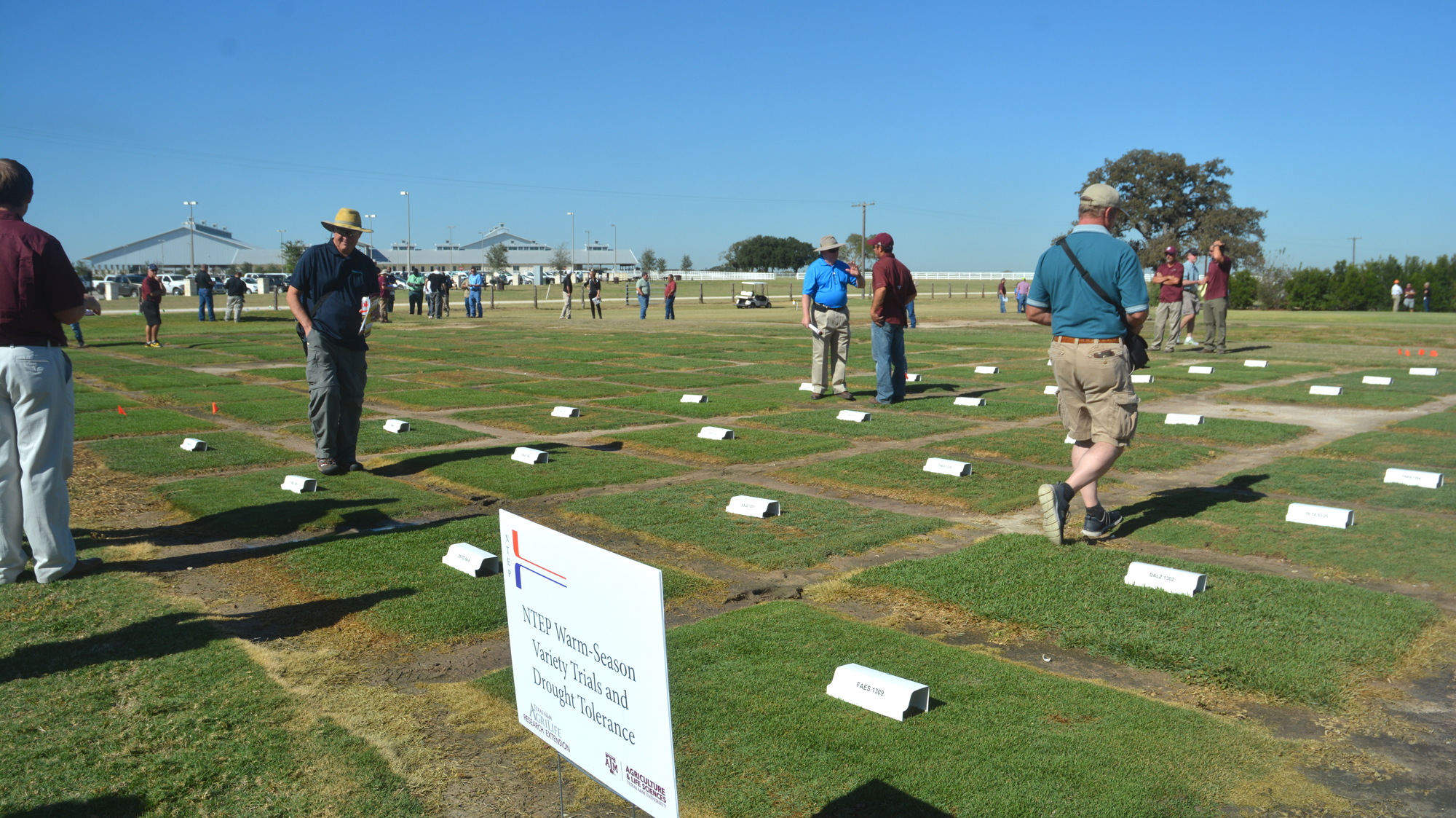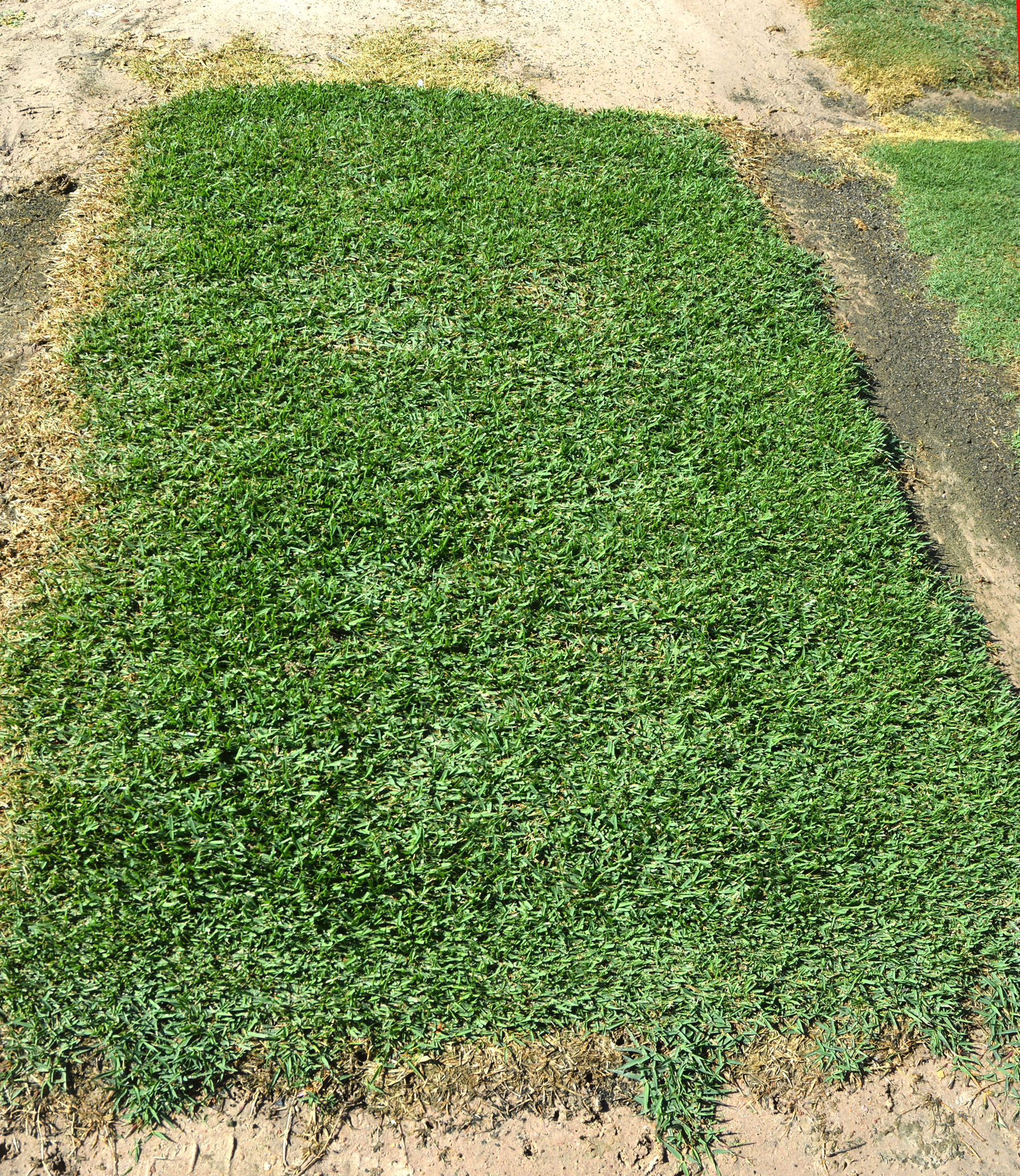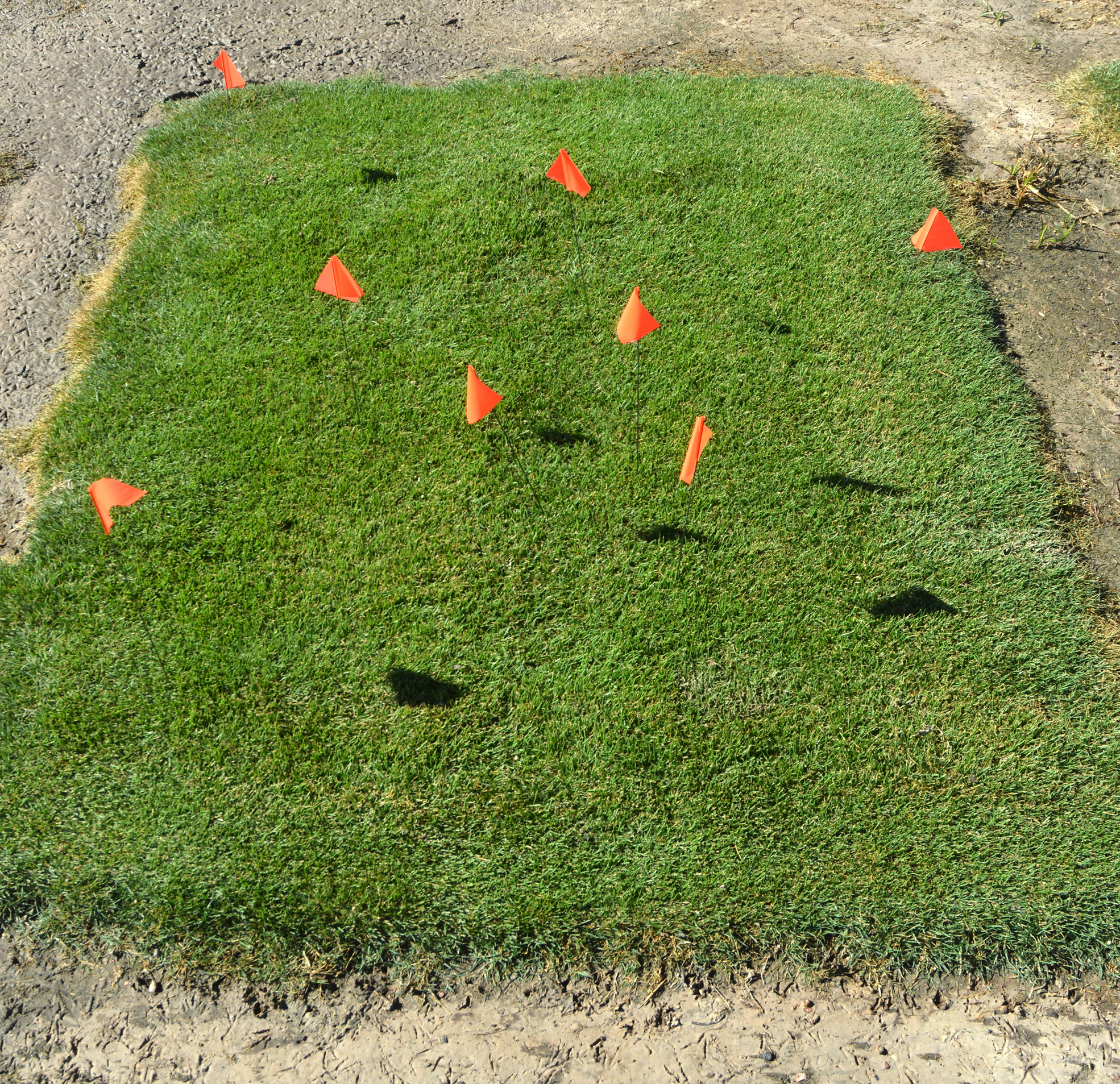College Station, Texas, USA
November 9, 2015
Not every grass is a good fit for home lawns, golf courses or athletic playing fields, so turfgrass researcher Dr. Casey Reynolds is testing varieties and comparing them side by side under Texas conditions as a part of the National Turfgrass Evaluation Program.
 The National Turfgrass Evaluation Program was explained during the annual turfgrass field day at College Station by Dr. Casey Reynolds, a Texas A&M AgriLife Extension Service turfgrass specialist, (Texas A&M AgriLife Communications photo by Kay Ledbetter)
The National Turfgrass Evaluation Program was explained during the annual turfgrass field day at College Station by Dr. Casey Reynolds, a Texas A&M AgriLife Extension Service turfgrass specialist, (Texas A&M AgriLife Communications photo by Kay Ledbetter)
Reynolds, a Texas A&M AgriLife Extension Service turfgrass specialist in College Station, is joined by Dr. Matt Elmore, an AgriLife Extension turfgrass specialist who is growing additional trials at the Texas A&M AgriLife Research and Extension Center at Dallas.
“The primary objective of these NTEP trials is to evaluate new and emerging varieties for their performance in southern and southeastern transition zone environments,” he said. “So, what that means is we plant grasses such as zoysiagrass, Bermuda grass, seashore paspalum and St. Augustine, because we know these species persist and do well in the southern United States and we evaluate them on an equal level.”
Reynolds said the AgriLife Extension trials at both locations include approximately 100 grass varieties, and the College Station trials were recently featured at the Texas A&M AgriLife Turfgrass and Landscape Field Day.
https://youtu.be/QDektRiPQZM
“We’ll take, for example, the NTEP zoysiagrass trial comprised of 30 or so different varieties and compare them to each other based on quality, color, leaf texture, density, drought hardiness, performance and pest incidence,” he said.
The National Turfgrass Evaluation Program then takes that data from this location and data from throughout the U.S. at other cooperating universities and compiles it.
 Different textures of zoysiagrass fit different perceptions of what may look best on a lawn. (Texas A&M AgriLife Communications photo by Kay Ledbetter)
Different textures of zoysiagrass fit different perceptions of what may look best on a lawn. (Texas A&M AgriLife Communications photo by Kay Ledbetter)
“This way a producer or a customer or anyone who is interested in planting a new variety can look and see an independent source of data and use it to evaluate whether or not that grass is a good fit for their needs,” Reynolds said.
“For instance, we may have a zoysia grass that may do great in terms of how it performs under drought, and next to it one that may look a little better, but the data tells us it may not perform as well under drought,” he said.
NTEP is a great way to organize all that data and compare varieties.
That’s an important thing to understand when selecting a grass variety, Reynolds said, “because we all know in the southern United States drought is always an issue and will continue to be an issue. We certainly want to breed and select grasses that do well in hot, dry climates.
 This fine-textured zoysiagrass with good density might be selected for a golf course tee box. (Texas A&M AgriLife Communications photo by Kay Ledbetter)
This fine-textured zoysiagrass with good density might be selected for a golf course tee box. (Texas A&M AgriLife Communications photo by Kay Ledbetter)
During the turfgrass field day, Reynolds asked the clients attending to place a flag in the plots that they thought looked the best.
“It was interesting to see that a lot of the flags were placed in the same plots,” he said. “I personally like a grass that has dark color, that has finer leaf texture and that has good density.”
Reynolds stood near two plots of grass with a big difference in texture, one rated four on texture and the other an eight. Looking at the data, he said, the eight is going to be a much nicer grass, “especially if you are on a golf course tee box, where texture is probably a bigger deal than if you are on a home lawn.
“But if you are a landscaper comparing the two species and you look at the drought data, you might say, ‘I don’t care how fine the texture is if I can’t keep it alive, texture doesn’t matter.’ So your selection may change.”
Reynolds said it is important not to get hung up on having the latest new variety – sometimes if it is not broke, why try to fix it?
“With the data we collect, we try to do it in a manner that is going to be reflective upon how people are going to view these grasses when they get to their home or their golf course or athletic field and whether it is going to fit into their environmental conditions.”
Results of the NTEP trials at College Station and Dallas can be found at http://www.ntep.org/. Other information on turfgrass species and variety selection for Texas can be found at https://aggieturf.tamu.edu/texas-turfgrasses.